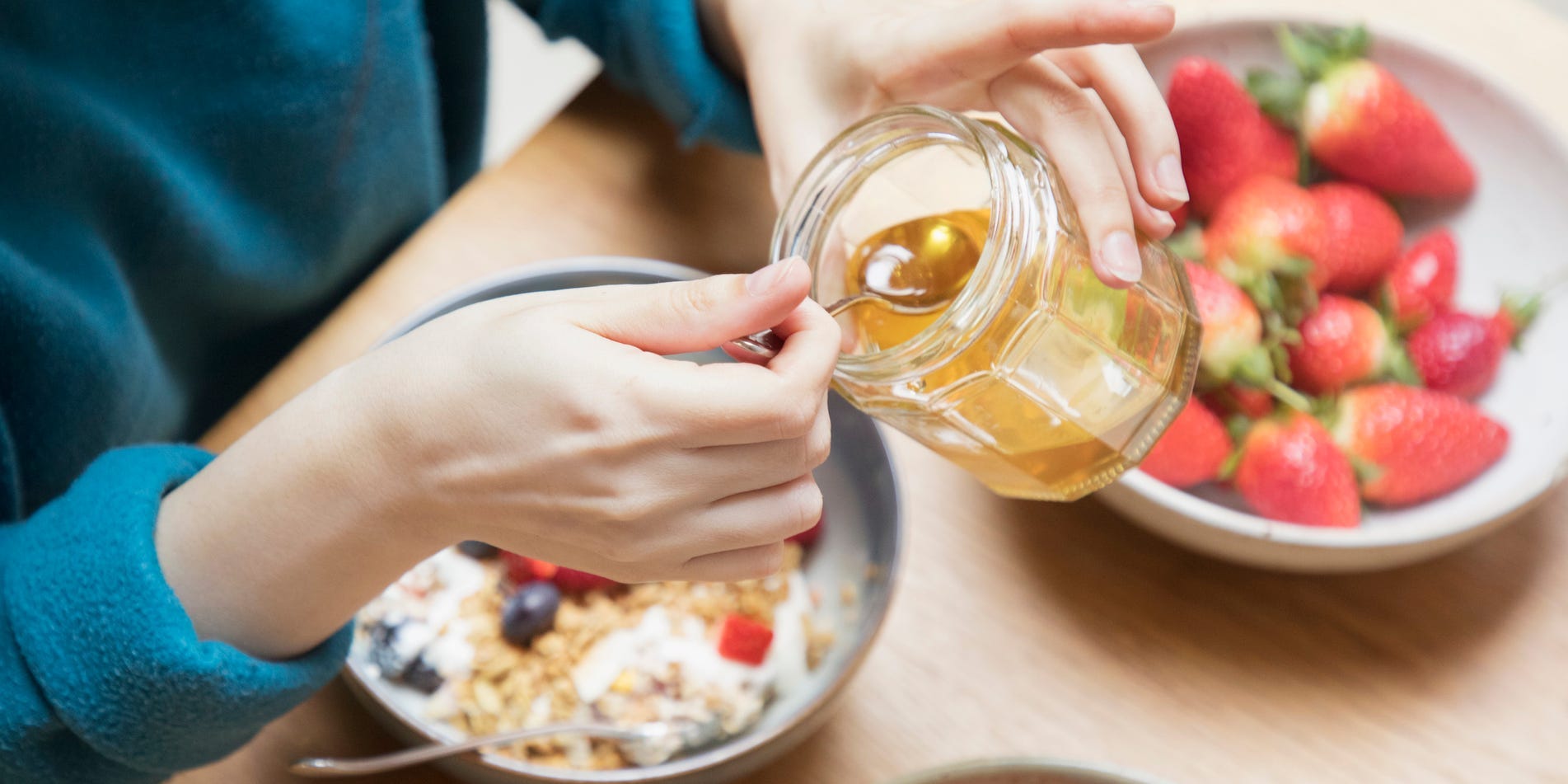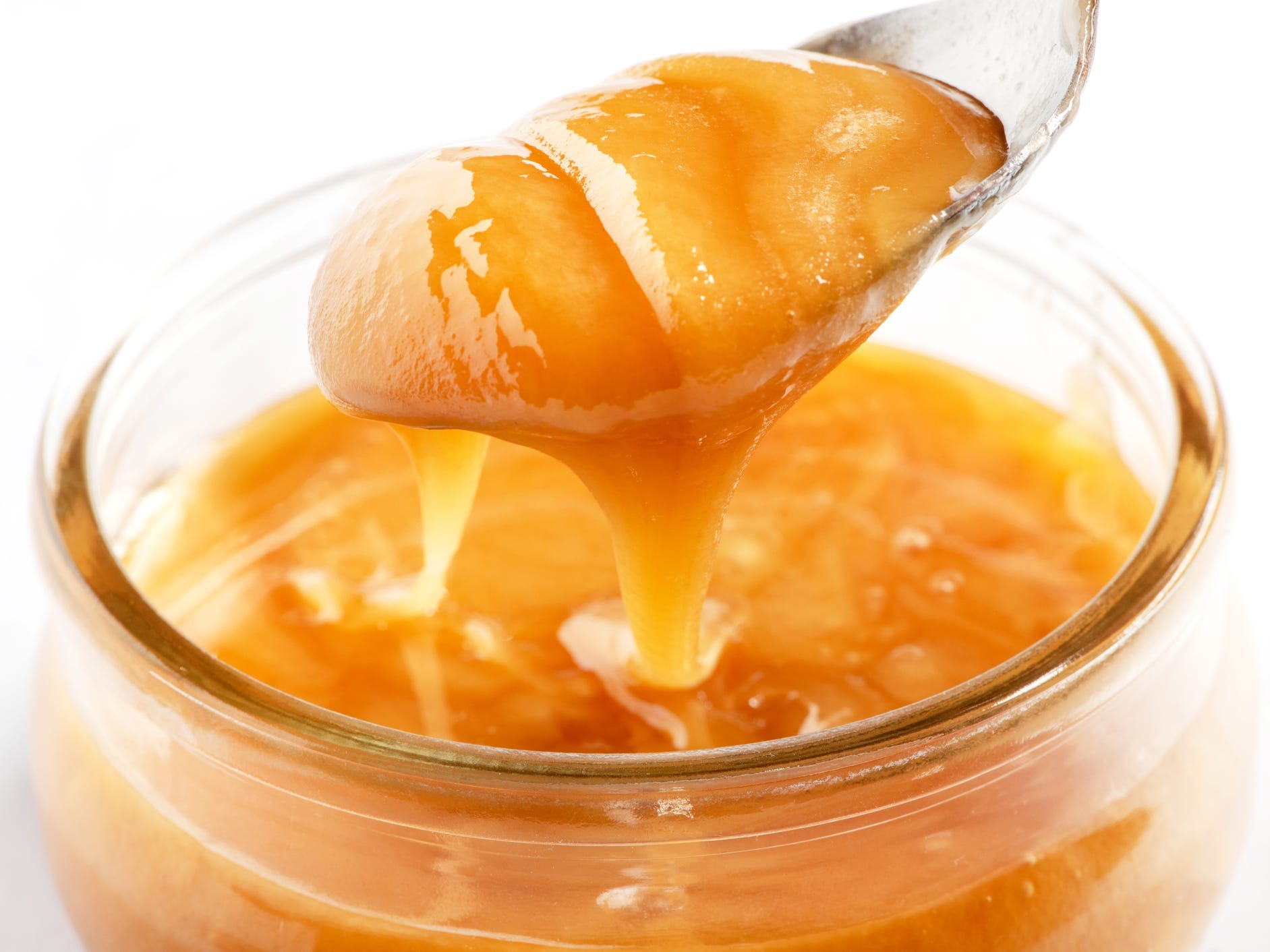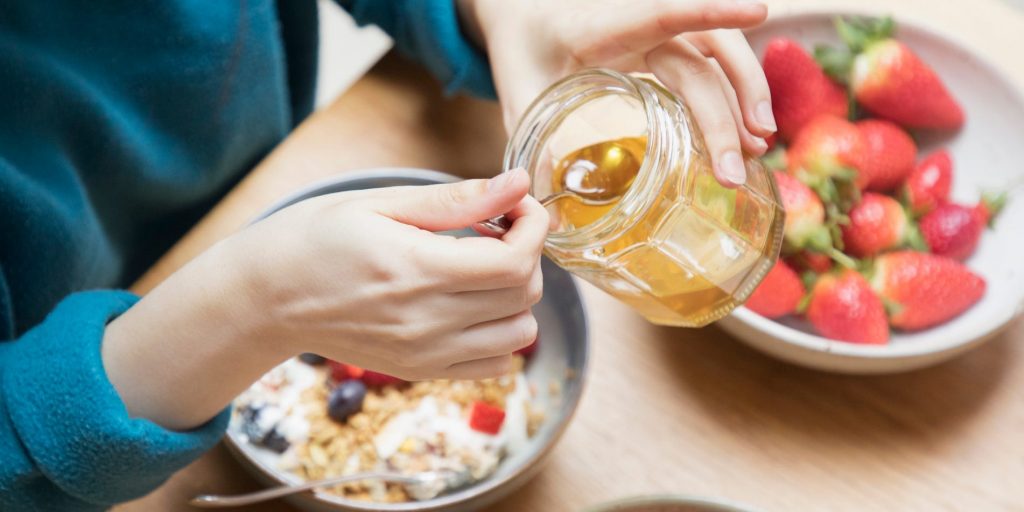
- When stored properly, honey doest not spoil.
- Store honey in a tightly sealed container and make sure no water gets inside.
- If honey crystallizes, simply heat it to soften.
- Visit Insider's Home & Kitchen Reference library for more stories.
Honey is generally not a pantry item that we worry about keeping around for too long and growing mold. "People always say that honey is the only food that lasts forever," says Marina Marchese, founder of American Honey Tasting Society and co-author of "Honey for Dummies."
The reality, she says, is a little more complex. If stored correctly, honey can last for quite a while. "But," she says, "it's not like wine where it gets better with age."
Does honey go bad?

Whether it's raw or heat-treated honey, if the honey is stored in a container with a lid and no water has been added to it (either by human hands or via humidity in the air), then it won't go bad.
Honey is about 80% sugar — a mix of fructose and glucose — and 17% water. The remaining 3% is a mix of vitamins, minerals, enzymes, pollen, and flavor compounds. Thanks to its low water content, honey will not go bad in a traditional sense, meaning the jar of honey will not grow mold or dangerous bacteria. Even if stored correctly, its aromatics and flavor can start to dull over the years, but if you're not a professional honey taster, you may not even notice.
Marchese, a professional honey educator, generally uses her honey within two years of harvest. Though it's not "bad" past then, the flavor and aromatics will dull a bit. "The average consumer wouldn't notice the difference, but I do," she says.
How to properly store honey
According to Marchese, storing honey is fairly straightforward. Make sure to keep the lid on tight and leave it on the shelf at room temperature. Be mindful of temperature fluctuations, which can catalyze the crystallization process.
Though it's difficult for honey to spoil, it's not impossible. If it was stored without a lid or water was added, it's possible that the honey could ferment or something could start growing on it. If it's bubbling or you see mold, toss it.
What to do if honey hardens

Don't worry if the honey has suddenly turned from a liquid to a solid. It may develop tiny crystals and grow darker in color. Nothing's wrong with it, it's just crystallization. "Healthy honey should crystallize," says Marchese.
However, the rate at which healthy honey crystallizes will depend on the type of honey. Though all honey is made up of a mix of sugars (specifically glucose and fructose) and water, the exact ratio varies by the type of honey. Crystallization happens when the glucose (which is less water-soluble than fructose) adheres to the trace amounts of pollen in the honey, which start to separate from the water. The crystals then replicate, breaking apart from the water.
The more glucose in the honey, the more quickly it will crystallize. If you're looking for raw honey that won't crystallize as quickly, Marchese cites tupelo, sourwood, black locust, and acacia honeys as ones with more fructose, meaning they're slower to crystallize.
Most honey from the grocery store is both heat-treated and ultra-filtered to remove pollen, meaning it will also crystallize more slowly.
There's nothing wrong with crystallized honey, but if the texture bothers you, you can put the jar in a bowl of hot water or simply microwave it on low to get that softer texture back.
Insider's takeaway
Though honey won't taste quite as vibrant on day 10,000 as it did on day one, its low water content means that it will stay in fairly good shape for as long as you're using it. Just make sure to keep the lid screwed on tightly and not to let any additional water find its way into the jar. Crystallized honey is perfectly fine to eat, but if you'd rather it be softer, you can just microwave it on low or let the jar sit in a bowl of hot water until it's at the texture you'd prefer.










